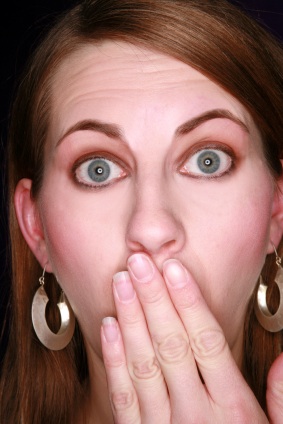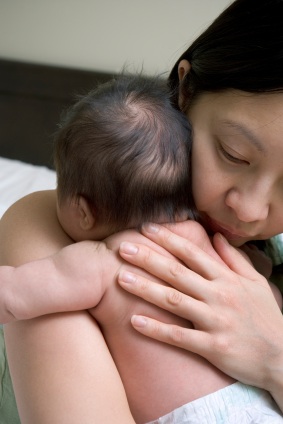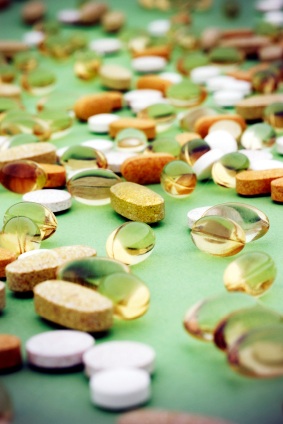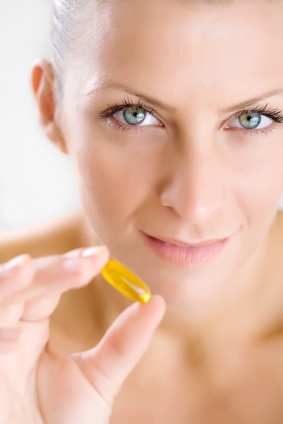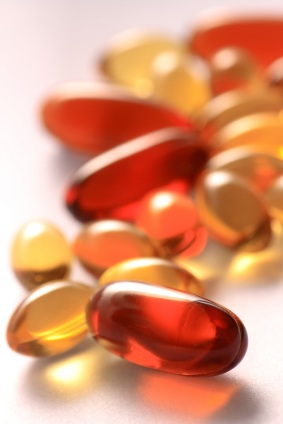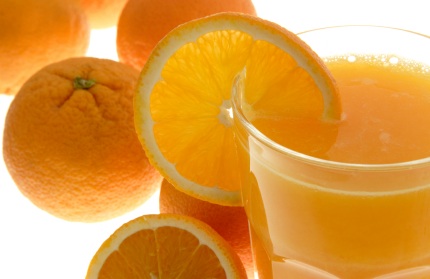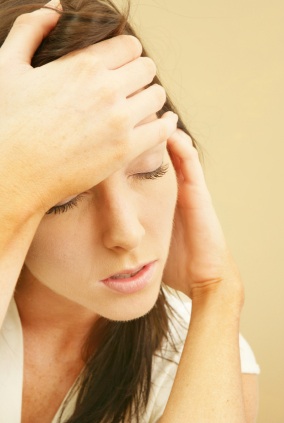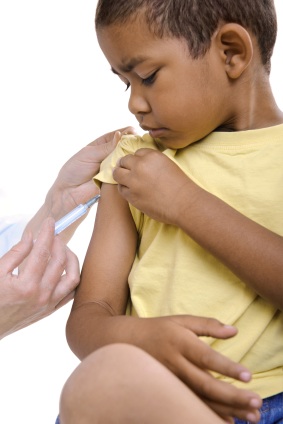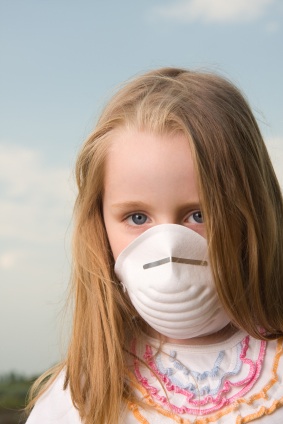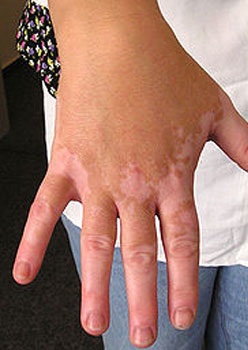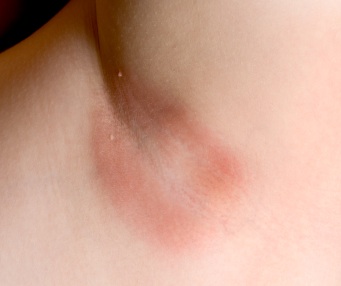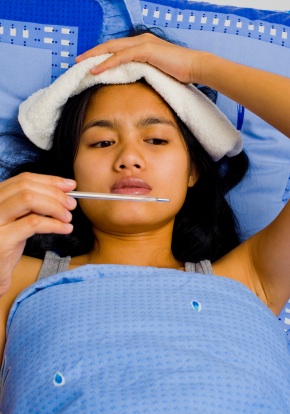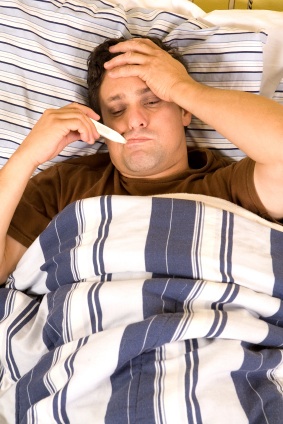The gallbladder is tucked up underneath the liver on the right side of the body. Its main function is to store bile – historically called “gall” – which is produced by the liver and carried to the common hepatic duct and the gallbladder through a series of tubules or ducts (bile ducts) embedded in the liver tissue. Normally 3-5 inches long, an inch wide and shaped like a tiny eggplant, the gallbladder can store about 1/4 cup of bile.
A tube called the cystic duct connects the gallbladder to the larger common hepatic duct to form the common bile duct. Not all bile goes to the gallbladder; some of it flows directly from the liver to the common hepatic duct to the common bile duct. The bile that goes to the gallbladder becomes concentrated by removal of fluids. When a meal is eaten, hormonal signals cause the gallbladder to contract and eject its bile.

Just before it connects with the duodenum or the first section of the small intestine, the pancreatic duct joins with common bile duct. A ring of muscle called the Sphincter of Oddi regulates passage of both bile and pancreatic juices into the small intestine. There the bile mixes with food that has come from the stomach and helps to emulsify and digest fats.
Gallbladder Disorders
Gallstones
Conditions that interfere with the flow of bile are the common sources of gallbladder disorders. Chief among these are the occurrence of gallstones (choleliths). Gallstones can be like sand grains or as large as a walnut. There are two main types of gallstones, pigment gallstones, made mostly of bilirubin, which is the breakdown product of red blood cells, and calcium salts and cholesterol gallstones.
Cholesterol gallstones are commonest and are yellowish or greenish in color. Pigment gallstones are dark-colored, either brown ones found in the bile duct or black ones found in the gallbladder. The liver synthesizes about one-quarter of the body’s daily cholesterol requirement, and it is fed into the bile along with other liver products. The liver oxidizes some cholesterol into bile salts, also called bile acids.
Gallstones cause problems when they become large or numerous enough to block bile flow within the liver, the gallbladder or the ducts between the gallbladder and small intestine. People often have gallstones but do not have symptoms (silent gallstones), in which case they are not of medical concern. The presence of gallstones in the gallbladder is called cholelithiasis; if they occur in bile ducts the condition is called choledocholithiasis. Gallstones can also block the pancreatic duct, leading to pancreatitis.
Symptoms
The symptoms of gallstone blockage, usually referred to as a gallstone attack or biliary colic, are pain in the upper right, sometimes central, abdominal region, nausea, vomiting, referred pain between the shoulder blades or below the right shoulder blade. Abdominal pain can be severe and is due to the swelling of the gallbladder and/or ducts as bile builds up due to the blockage or the passage of stones through a duct.
Presence of gas and burping can also occur. Consuming a lot of food at one sitting can trigger an attack. Often attacks occur during the night. Gallstones can move about, and symptoms often abate as they reposition themselves or are excreted and allow a renewed flow of bile.
Symptoms of more advanced gallstones, where the blockage remains in place for longer periods of time or if infection sets in, are chills and fever, jaundice or a yellow tinge to skin and eyes, pain that doesn’t go away, and light-colored stools. It is the presence of bile that gives stools the characteristic brown color. When such symptoms occur, medical help should be sought immediately.
Causes
Gallstone formation is thought to be influenced by inherited factors, by conditions that affect how often and how well the gallbladder empties, and bile imbalances such as excess cholesterol or bilirubin or lower levels of bile salts. For instance, elevated levels of estrogens encourage the liver to increase the amount of cholesterol in bile.
This higher amount of cholesterol in bile, plus possible imbalance in bile salts, which are necessary to keep the cholesterol in a liquid state, makes gallstone formation more likely. Progesterones reduce the movement of the gallbladder so that it doesn’t empty as often or as completely, allowing bile to concentrate further and crystals of cholesterol or precipitates of bilirubin and bile salts to form.
These clump together and harden to form gallstones. If there are narrow places or constrictions along any of the ducts between the gallbladder and the duodenum, blockages can more readily lodge in those areas.
People who have decreased gut motility and hence decreased gallbladder activity due to such causes as being bedridden, limited food intake, or nutrition by IV are also susceptible to gallbladder disorders. These people are likely to produce not gallstones but “sludge” or pseudoliths – small particles of cholesterol, calcium and bile salts which can also produce blockages.
Risk Factors
Risk is elevated in the following categories:
- women
- overweight people.
- people over 40 years old.
- women who have borne multiple children.
- those who have a history of gallstones in their family.
- women who have higher estrogen levels due to pregnancy or medications containing estrogen.
- those who eat foods low in fiber, high in cholesterol and saturated fats.
- people who come from certain ethnic backgrounds: Caucasian, Hispanic, Native American.
- those who take cholesterol-lowering drugs.
- people consuming no-fat or very low-fat diets.
- those who have decreased gallbladder motility due to illness, disease, paralysis, decreased oral intake of food.
- people who have rapid weight loss such as that associated with bariatric surgery or extreme diets.
- people with diabetes.
- those with excess bilirubin in bile due to blood disorders like chronic hemolytic anemia.
Prevention Tips
Estrogen and progestin. Since being female is a risk factor, female hormones estrogen and progestin are implicated in the eventual expression of symptomatic gallbladder disease. The increase of estrogen after pregnancy can be lessened when a woman breast-feeds her child, since milk production keeps her estrogen level low. Considerations should also be given to the amounts of estrogen in birth control formulations and in hormone replacement therapy given around the onset of menopause. The length of use is also important. Hormone replacement therapy has been shown to signficantly increase the number of gallbladder surgeries done.
Maintaining a healthy body weight. Being overweight increases the risk of getting gallbladder disease. In addition, fat tissue produces estrogen, which is a risk factor for developing gallbladder disorders.
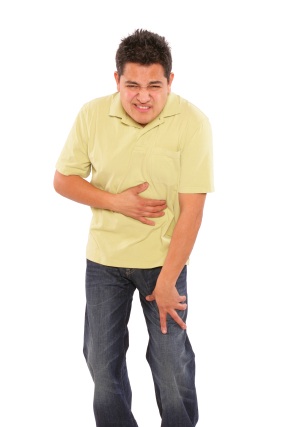
Dietary considerations. Eating regular meals of moderate size and foods high in fiber content helps intestinal tract and gallbladder motility, reducing the likelihood of infrequent or partial gallbladder emptying. Reduced intake of foods high in trans-fatty acids and saturated fats is recommended. Conversely, not having enough fat in the diet can also predispose toward gallbladder disease.
Fat in food is the stimulus to produce the hormone cholecystokinin (CCK), which triggers the contraction of the gallbladder to expel its contents. In the absence of fat in foods, gallbladder activity is lessened and gallstones have more of an opportunity to form.
Testing and Diagnosing
When symptoms suggest gallstone disease, detecting their presence or absence is necessary. There are other serious conditions such as appendicitis, ulcers, hiatal hernia, pancreatitis, heart attack, hepatitis which give mid- or right-abdomen pain, and these need to be considered and ruled out since the presence of gallstones alone doesn’t necessarily cause symptoms.
Laboratory studies. These are usually most helpful in diagnosing other conditions that may give abdominal pain. They are not as useful in diagnosis of gallbladder disease except if an infection (cholecystitis) is present. Even then, elevated white blood cell counts are not present in one-third of patients. Some blood tests may indicate the possible location of the problem – if transaminase is high, the liver; if bilirubin and alkalkine phosphatase are high, the common bile duct could be obstructed.
Imaging Techniques
Ultrasound
Gallstones larger than 2 mm can be imaged by ultrasound (sonogram). Noninvasive, with no radiation risk or exposure to contrast dyes, and less expensive than most other options, ultrasound is the diagnostic tool of choice. Images can also reveal if the gallbladder wall has thickened or if the gallbladder is enlarged, both further signs of gallbladder disease.
Classic x-rays
X-rays are used in conjunction with dye tablets swallowed by the patient in doing an oral cholecystogram or OCG. The dye improves the visibility of stones when the gallbladder is x-rayed. Another test, the percutaneous transhepatic colangiogram, uses x-rays in conjunction with an injected contrast dye to image the progress of dye through the biliary system on a fluoroscope.
CT scans (Computerized tomography)
This serves as a secondary tool following sonograms to further image areas of interest. CT scans are used to find stones within the liver’s system of ducts and to delineate the possibility of persistent infections.
Scintigraphy is helpful in imaging blockage of bile ducts within the liver or of the cystic duct. This technique is part of nuclear medicine, where aharmless radioactive isoptope is administered intravenously and its eventual location in the body is mapped by a device which detects radioactivity.
ERCP (Endoscopic Retrograde Cholangiopancreatography)
This outpatient procedure is used to view the inside of the duodenum where the common bile duct enters. It helps evaluate any blockages as well as conditions of the sphincter and ducts. After sedation, a thin tube is put from the mouth into the stomach and then into the small intestine. There is a light and an imaging device – either fiberoptic or video chip – at the end of the tube. Small tools can also be used to take tissue samples and perform other tasks.
Treatment Options
Surgical removal of the gallbladder or cholecystectomy. When gallstones are found present and symptoms occur and recur, treatment of choice is removal of the gallbladder. The biliary system is still able to function without the gallbladder. Bile flows directly from the liver to the small intestine.
Removal can be done laparoscopically or by traditional open surgery involving a 4-7 inch abdominal incision. In laparoscopic sugery, 3-4 small incisions are made at designated points on the abdomen.
Surgical tools and a small lighted camera with are inserted through these. The camera permits the physician to view the abdominal cavity and allows gallbladder removal with minimal destruction to tissues. The patient can usually go home in a day or two and is back to normal routines in about three weeks.
Traditional surgery is needed if complications arise that contraindicate laparoscopic procedures. There is a longer hospital stay and a longer recovery period. Some patients continue to feel gallstone symptoms after the gallbladder is removed (postcholecystectomy syndrome, PCS). It is unknown why this occurs. Complications occur in less than 2% of cases for both types of surgeries; these include damage to bile ducts, bleeding, blood clots, pneumonia, infection.
A possible consequence of cholecystectomy is chronic diarrhea in some patients. Causes are not known, but the laxative effect of the steady stream of bile into the intestine may be responsible. Also, without the bolus of concentrated bile from the gallbladder when eating high-fat foods, fat digestion may not be as effective. Medications can help with these conditions.
Lithotripsy (ESWL or Extracorporeal Shockwave Lithotripsy)
This is the use of shock waves (soundwaves) to break up gallstones. The smaller pieces can then be eliminated. It is used when gallstones are small or when surgery is not indicated. Abdominal pain can occur after this treatment is given.
Medical Treatments
The drugs ursodeoxycholic acid, chenodiol, methyl tert-butyl ether and monoctanoin can be administered to dissolve cholesterol gallstones. They are made from bile salts and take prolonged treatment to be effective, months to years. Ursodeoxycholic acid (Actigall) and chenodiol (Chenix) are taken orally. Actigall is expensive. The latter two drugs are given directly into the bile duct or gallbladder. None of these medications prevent formation of new gallstones once treatment is stopped. They are used primarily in patients who cannot receive surgery.
Alternative Therapies
Acupuncture has been used to treat the pain of attacks and stimulate the flow of bile. Herbal remedies include Milk Thistle (Silybum marianum), Turmeric (Curcuma longa), Globe Artichoke (Cynara scolymus) and green tea. Castor oil packs have been applied to the abdomen to alleviate swelling. Homeopathic remedies include Colocynthis, Chelidonium, and Lycopodium.
Another practice, which is not widely accepted medically, is using gallbladder cleanse, also referred to as liver cleanse or gallbladder flush. It consists of drinking a mixture of olive oil, fruit juice – usually lemon, lime or grapefruit – and sometimes herbs or epsom salt. This preparation supposedly loosens gallstones and helps to expel them in stools.
Inflamed Gallbladder (Cholecystitis)
The leading cause of inflammation is gallstones causing a blockage. When the bile can’t move, inflammatory enzymes are released by the mucus cells lining the gallbladder. The mucus cells become damaged and produce fluid in addition to the trapped bile, resulting in more swelling. Bacteria flourish in such a setting and infection can set in.
Sometimes inflammation occurs when there are no gallstones (acalculous cholecystitis). Causes are stagnant bile, bacterial infections, or reduction in blood flow to the gallbladder. Risk factors include shock, severe trauma or illness, long-term fasting, or a reduced immune system.
Diagnosis and tests are as for gallstones with the addition of antibiotics for infection and pain medications. Treatment is removal of the gallbladder. If infection is present that should be addressed first. Surgery is best performed during earlier stages of inflammation before thickening and toughening of gallbladder walls and scarring and narrowing of ducts (sclerosing cholangitis) can happen. Infection can also spread to the pancreas through the pancreatic duct.
Ongoing untreated choleocystitis can lead to organ damage and malfunction. Gallbladders can become gangrenous or even perforated, allowing the bile to leak to the peritoneal cavity. Death can result.
Gallbladder Cancer
This rare cancer is usually detected when testing for something else. Often there are no symptoms, but the following have been reported: jaundice, abdominal pain similar to that for gallstones, weight loss, diminished appetite, fever and itching.
Women get gallbladder cancer more often than men, and incidence increases with age. If some other gallbladder diseases have been present such as gallstones, cholecystitis, choledochal cysts – which is a bile duct abnormality present at birth – and a condition known as porcelain gallbladder, the person is more at risk.
Diagnosis involves the imaging tests already discussed under gallstones plus the use of MRI (magnetic resonance imaging) to determine the spread and location of the cancer. Exploratory surgery is also used for this. Treatment depends on the stage of the cancer. For cancers contained in the gallbladder (Stage I), cholecystectomy is effective. If the cancer has spread to the adjacent liver (Stage II), it can still be treated surgically. If it has spread to other nearby organs (Stage III) or throughout the body (Stage IV), treatment options are radiation therapy and chemotherapy.
Porcelain Gallbladder (Calcifying cholecystitis)
This uncommon condition is associated with damage from gallstones and recurrent infections. Calcium becomes deposited in the muscles and mucosa of the gallbladder. The walls appear bluish and are brittle. There are no symptoms and most cases of porcelain gallbladder are found when conducting imaging tests for other conditions. Because of the high incidence of gallbladder cancer when porcelain gallbladder is present, gallbladder removal is advised whenever this condition is found. The best way to image it is through CT scans.

